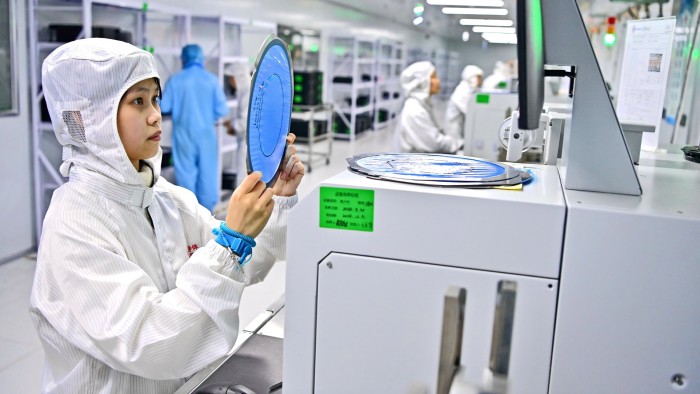Unlock the White House Watch newsletter for free
Your guide to what the 2024 US election means for Washington and the world
The US has launched a probe into alleged anti-competitive measures by China to support its semiconductor industry, just weeks before the Biden administration hands over to president-elect Donald Trump.
The US Trade Representative’s office said it was investigating “China’s acts, policies and practices related to targeting of the semiconductor industry for dominance”.
The probe will be conducted under Section 301 of the US Trade Act and initially target what the USTR called “foundational” semiconductors, including those used by the automotive, healthcare, infrastructure, aerospace and defence industries.
It marks the latest in a worsening tit-for-tat trade war over semiconductors, sparking fears of serious disruptions to international supply chains.
Potential outcomes of a Section 301 investigation include import restrictions or new tariffs on shipments from China of the kinds of chips used in cars, household appliances and consumer devices — a decision that would fall to the Trump administration.
Washington on Monday accused China of using “extensive anti-competitive and non-market means, including setting and pursuing market share targets, to achieve indigenisation and self-sufficiency”. China’s alleged tactics were designed to achieve dominance of the semiconductor industry in China and on global markets, the USTR said.
The Chinese foreign ministry did not immediately respond to a request for comment.
After several years of focusing its semiconductor policies on the most cutting-edge processors necessary for creating advanced artificial intelligence, Washington is turning its attention more to the mature end of the market, with chips manufactured using what the industry calls “legacy” production systems.
Makers of advanced chip manufacturing equipment, such as ASML, are already restricted from selling their most sophisticated tools to Chinese chipmakers, holding back China’s advances in AI and curtailing its efforts to build a rival to Silicon Valley-based Nvidia.
However, that has not prevented Chinese chipmakers from making huge investments to scale up production of legacy semiconductors. Some analysts estimate that China is on track to double its chip manufacturing capacity by the end of the decade, boosted by subsidies from Beijing.
US and European semiconductor executives have warned that local chipmakers could suffer from the same kind of problems that the flood of low-cost Chinese solar panel imports has caused western producers in recent years. Relying on Chinese suppliers could also create national security issues for the US, officials fear.
Often overlooked amid the hype around AI, the significance of legacy semiconductors became apparent during the Covid-19 pandemic, when factory shutdowns triggered widespread shortages of everyday electronic goods.
A report by the US Department of Commerce earlier this month found that China’s recent increase in production of mature-node semiconductors “has already begun to cause pricing pressure that may weaken US chip suppliers’ competitive positions”.
More than two-thirds of US companies’ products use chips produced in Chinese foundries, the report said.
China has for decades viewed its dependence on the US and other countries as a fundamental national security vulnerability. But it has struggled to shake its reliance on foreign companies for the key design and manufacturing technologies needed to make increasingly sophisticated chips.
Earlier this month, Washington issued new export controls targeting China’s ability to make the most advanced chips, including tougher restrictions on shipping semiconductor manufacturing tools and a ban on exports of advanced memory chips needed in AI hardware.
Beijing swiftly hit back, banning the shipment to the US of key minerals and metals used in chip production. It also opened its own investigation into Nvidia for suspected violations of the country’s anti-monopoly law.
Read the full article here
